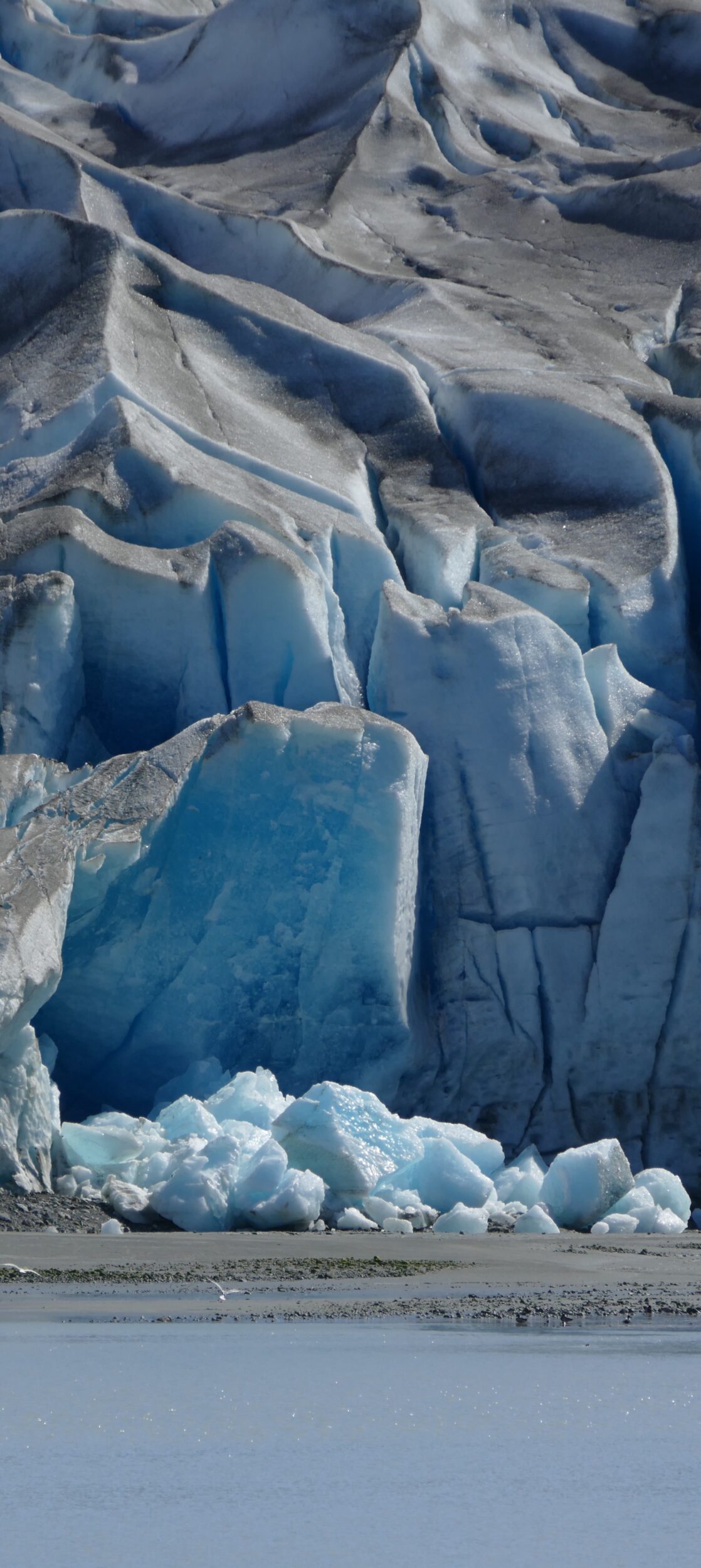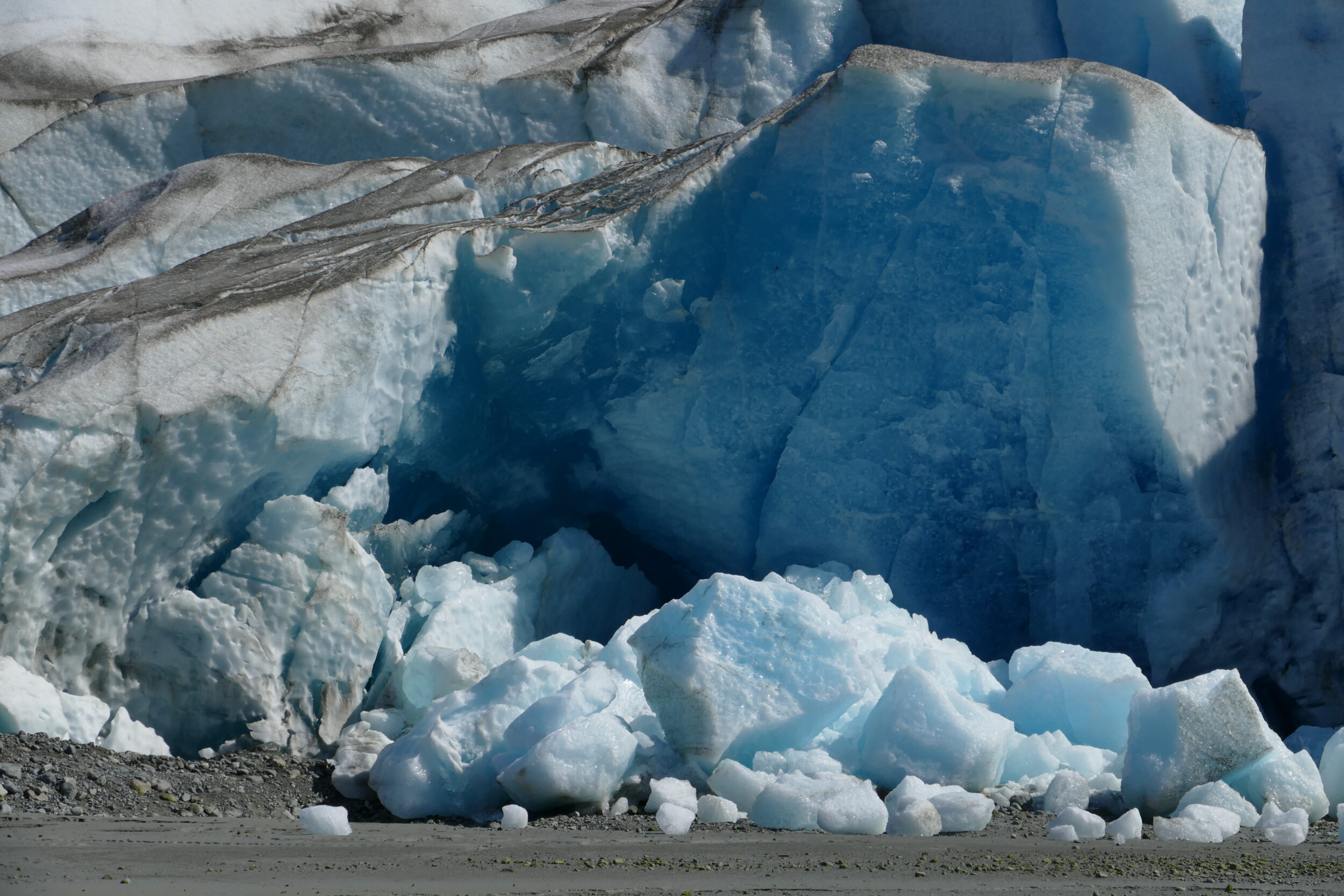You may be surprised to know that this post’s featured image involved a considerably shorter lens than did the “5A” photo, taken 38 minutes earlier, when we were still offshore.
When I took the above photo, we had for some minutes been strolling along the rather young beach which had formed/emerged as the glacier retreated – and lost its former status as a “tidewater” glacier.
When Captain Cook sailed into Glacier Bay in 1778, a considerably smaller portion of the Bay’s waters were liquid and navigable – tidewater glaciers then covered much of what is now open water.
The glaciers’ retreat has been dramatic, and the local ice “load” has been much-reduced; formerly-hidden, lower-lying terrain has emerged into plain view…and now bears no such load.
Glacier Bay’s shorelines are not only advancing; they are also rebounding – now standing a little taller than they did when compressed by colossal tonnages of ice.

By Glacier Bay standards, this is not a huge glacier.
